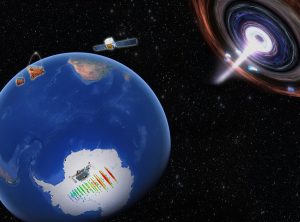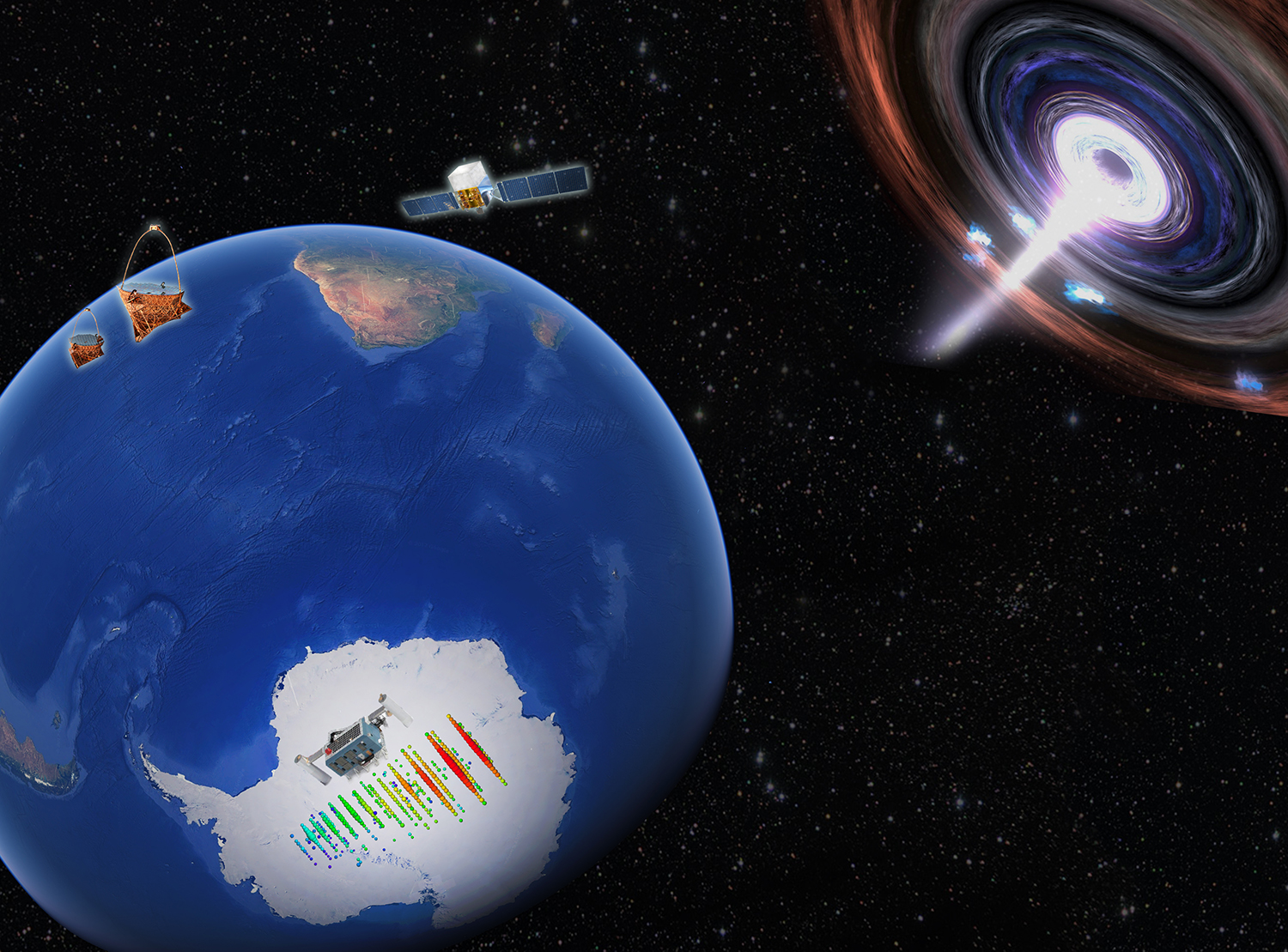
TUSCALOOSA, Ala. — Three professors at The University of Alabama are part of an international team of scientists who found evidence of the source of tiny cosmic particles, known as neutrinos, a discovery that opens the door to using these particles to observe the universe.
“We’re beginning to do astronomy using means other than light, combining electromagnetic (light) observations with other measurements in what we now call multimessenger astronomy,” said Dr. Marcos Santander, UA assistant professor of physics and astronomy.
“This is the first evidence that we have of an active galaxy emitting neutrinos, which means we may soon start observing the universe using neutrinos to learn more about these objects in ways that would be impossible with light alone.”
High-energy cosmic neutrinos are ghostly subatomic particles that can travel unhindered for billions of light years from the most extreme environments in the universe to Earth. Since they were first detected over 100 years ago, cosmic rays—highly energetic particles that continuously rain down on Earth from space—have posed an enduring mystery: What creates and launches these particles across such vast distances? Where do they come from?
Neutrinos may provide the answer to this long-standing question as they are expected to point back to the sources of cosmic rays.
Two papers published this week in the journal Science provide, for the first time, evidence for a known blazar, a giant elliptical galaxy with a massive, rapidly spinning black hole at its core, as a source of high-energy neutrinos.
This is based on the observation of neutrinos from the direction of the blazar by the IceCube Neutrino Observatory at the Amundsen–Scott South Pole Station and observations from telescopes around the globe and in Earth’s orbit.
The findings were announced today in Washington D.C. at the National Science Foundation, which supports the IceCube observatory.
Along with Santander, UA co-authors on the paper in Science are Drs. Dawn Williams, UA associate professor of physics and astronomy, and William C. Keel, UA professor of physics and astronomy.
Williams is analysis coordinator on IceCube and a longtime contributor to the project.
“We’ve seen the neutrinos for years but did not know where they are coming from, and now we are getting a glimpse of their origin,” said Williams. “This is what IceCube was built to do, and it’s an exciting time for neutrino astronomy.”
Santander, also an IceCube member, worked on the compilation of the multi-wavelength observations of the active galaxy collected by different observatories to build a spectral energy distribution, which informs how the galaxy emits electromagnetic radiation across the entire spectrum, from radio ways to high-energy gamma rays.
He was also involved in this project through his work on the Very Energetic Radiation Imaging Telescope Array System, or VERITAS, a ground-based gamma-ray instrument operating in southern Arizona, where he co-chairs the dark matter and astroparticle physics science working group and leads the multi-messenger efforts of the observatory.
VERITAS observations of the blazar, collected between September 2017 and February 2018, led to the detection of very-high-energy gamma rays from this object, confirming its extreme nature. The study, led by Santander, is accepted for publication in Astrophysical Journal Letters.
Keel was brought in by Santander to provide optical measurements of the blazar, which he did for about six months of observations on telescopes in Arizona, Chile and the Canary Islands through UA’s membership in the Southeastern Association for Research in Astronomy.
“The project had people doing neutrino work and traditional astronomy,” Keel said. “It’s a meeting of the two cultures of astronomy – high-energy physics and astrophysics.”
Contact
Adam Jones, UA communications, 205-348-4328, adam.jones@ua.edu; Chris Bryant, communications, 205-348-8323, chris.bryant@ua.edu
Source
Dr. Marcos Santander, jmsantander@ua.edu; Dr. Dawn Williams, drwilliams3@ua.edu; Dr. William C. Keel, keel@ua.edu
